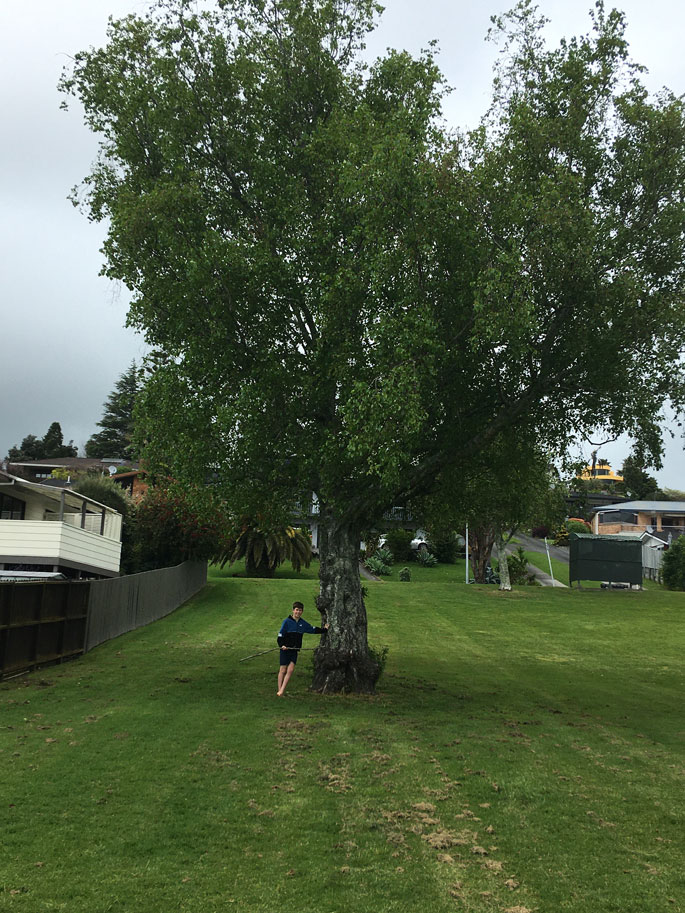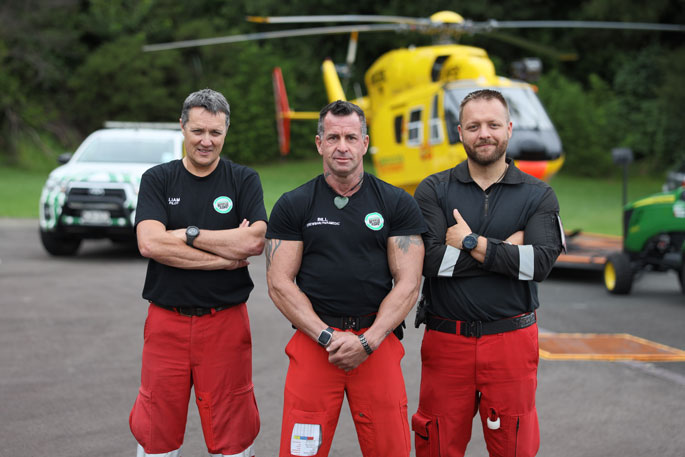'Upon arriving at the scene, you can see the condition of Jesse, that's when you stop and think we really need to make this happen for Jesse and his family, without any delay,” says Critical Care Flight Paramedic Dave.
In October last year, Tauranga 11-year-old Jesse and his two brothers were enjoying a day out in the park near their house when tragedy struck.
Jesse fell roughly 4-5 meters from a tree branch he was standing on, leaving him unconscious and unresponsive. His mother, Karina, rushed over to him, horrified at the sight.
On that day of the accident, the rescue helicopter crew received the notes about Jesse, and it had been determined that Jesse's status was critical.
As a result, the Aerocool Rescue Helicopter was dispatched right away to the scene of the accident.
 Jesse standing next to the tree.
Jesse standing next to the tree.
As the rescue helicopter arrived near the scene of Jesses' incident, Pilot Liam was able to land in a nearby reserve, about 50m meters away from the scene.
Upon arriving, other emergency services were at the scene working to stabilise Jesse and preparing him for transport. Dave, the onboard Critical Care Flight Paramedic, carefully assessed the situation and began to work, ensuring Jesse was given the best care and attention needed for his critical injuries.
'After initially assessing Jesse, we were worried about a head injury, Jesse was not in a good way, so the decision was made that the best care for him would be at Waikato Hospital and to facilitate that and get him there as safely as possible, we needed to treat him on the scene,” says CCFP Dave.
One of the major benefits of the rescue helicopter crew being present on the scene at Jesse's accident that day, was the ability to perform an RSI (Rapid Sequence Intubation).
This is a life-saving technique that is only able to be performed on-site by a medically trained crew.
During this process, the patient is put to sleep and their airway is supported through a tube. From there, with the assistance of the other emergency services, Crewman Bill and CCFP Dave were able to load Jesse safely into the helicopter.
The Waikato Hospital fortunately was only a quick 25-minute flight in the rescue helicopter versus a 90-minute drive by road, meaning in time-critical situations like this, the rescue helicopter is the best way to go.
As Jesse was arriving at Waikato Hospital there was an emergency medical team waiting for him on landing, ready to give him the further medical attention he needed for his injuries.
'Jesse's main injury was a Diffuse Axonal Injury (DAI) to his brain, which is lots of tiny tears throughout the brain. He also lacerated his right lung, fractured his right scapula, and fractured his C2 vertebrae at the odontoid peg,” says Jesses' mum Karina.
 Jesse with his family.
Jesse with his family.
When arriving at Waikato Hospital, it was still uncertain the extent of Jesse's brain injury. He was taken for a CT scan of his brain.
Fortunately, Jesse was lucky to have escaped any major bleeds to the brain, and in time, he would make a full recovery.
It was a relief to Jesse's family and friends that the rescue helicopter was able to arrive on the scene so quickly on the day of his accident, giving Jesse the best chance of making a full recovery.
When minutes matter – your support saves lives. Donate to this year's Chopper Appeal, so that your rescue crew can continue to save lives like Jesse's - https://give.rescue.org.nz/event/aerocool-rescue-helicopter/chopper-appeal



0 comments
Leave a Comment
You must be logged in to make a comment.